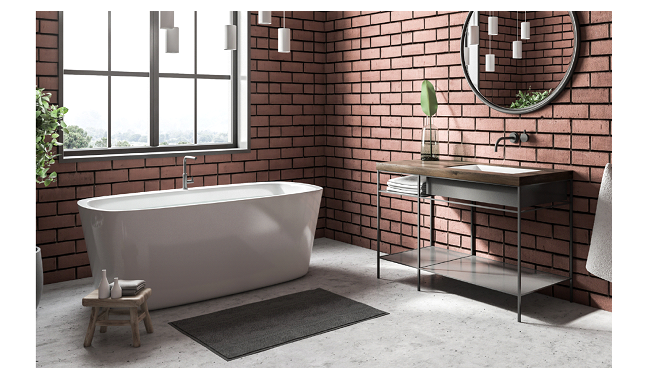We call a freestanding bathtub that which is not supported by two of its sides on a wall, as is the case with traditional bathtubs. It can be defined as one of those old bathtubs, with legs or resting directly on the floor.
They are usually included in bathroom renovations when we want it to have a luxurious appearance. A very good idea if we are going to opt for this type of bathtub is to find out if we can put it in the center of the room and not confine it against a wall.
The first idea is that the bathtub is the main element of the space, as it happens in the trend of bathrooms with island.
Advantages of freestanding bathtubs
Freestanding bathtubs have great advantages within the layout of our bathroom. First of all, depending on the model chosen, they can bring an old and retro touch to the space or just the opposite, turning it into a modern and distinguished corner.
Having this type of bathtub has the main hallmark of the feeling of luxury it brings. Being large and sophisticated, large and spacious bathrooms are needed to give the freestanding bathtub all the prominence it deserves.
Another of the main advantages that we find is that there is one for each type of style. That is, it does not matter that you are nostalgic or that you want to bet on a much more modern and ground-breaking touch.
By being manufactured in different styles, sometimes in contrast, we can find the model that best suits us.

Steps to install a freestanding bathtub in your bathroom
If all the advantages have convinced you and you want to know how to install a freestanding bathtub in your home, we will summarize it in five simple steps to make it simple for you.
Choose the space
Before installing it, you must choose the space where you are going to place it. It is important that this surface is level, free of humidity and clean, as it will be the support of the freestanding bathtub.
Check stability
Once we have placed it in the place we determined for it, it is necessary to check that its feet are perfectly adjusted and that it is horizontal.
Install the faucet
It is time to install the faucet and the siphon. Once this is done, the siphon must be connected to the water evacuation tube. If you don’t understand much about plumbing, this is best done by an expert on the subject.
Check for leaks
After installation, another important step that we often overlook is to turn on the tap and let the water run. In this way, we will check how it does it and if it has any type of leak. If so, we will proceed to solve it as soon as possible.
Seal the edges
Finally, we must seal the edges of the base of the bathtub with silicone to the floor to ensure that it is fixed perfectly. The finish here is important, so we must ensure that the work is clean and perfect, taking care of every detail.
We hope that this little guide on how to integrate a freestanding bathtub into your home has helped you and that you have decided to give it a try. And, of course, at Acquaviva, they have the best professionals who will help you in selecting the right model of freestanding bathtub you need to make your project come true.

